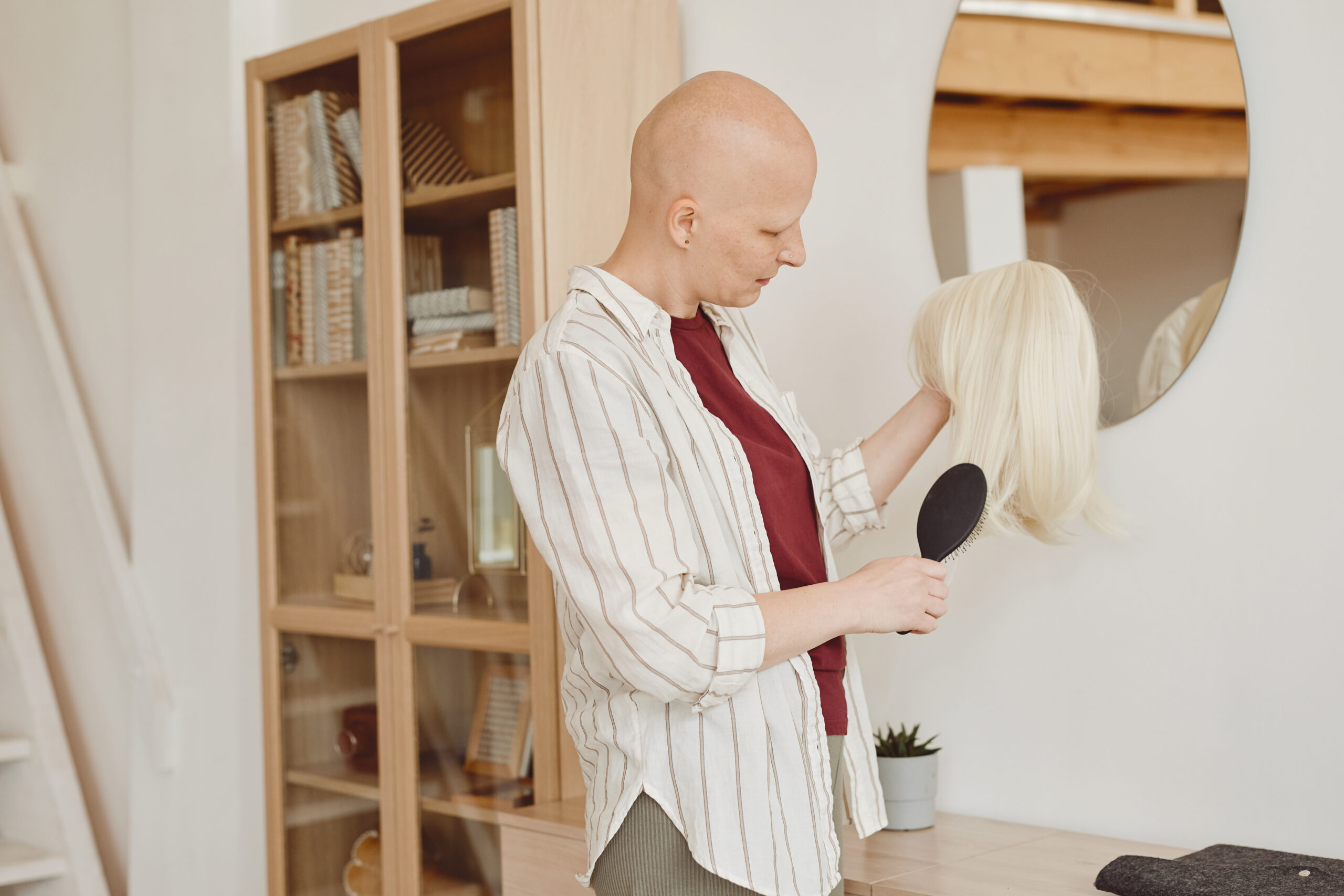One of the most visible side effects of chemotherapy is hair loss. Now depending on the amount of treatment you have had, there are some people who will have their hair grow back and others who will no longer have hair. It is understandable that there’s a great deal of impact on one’s confidence and sense of identity when you undergo this significant physical change.
Whether you are still waiting for your hair to grow back or need something as a permanent solution to gaining your original look, this guide will help you learn the basics of choosing the best wig for you.
Choosing the Right Type of Wig
The choice between synthetic and human hair wigs depends on your budget, lifestyle, and personal preference. Synthetic wigs are more affordable and low-maintenance but offer less versatility in styling. Human hair wigs, while more expensive, can be styled just like your own hair. The cap construction of the wig also plays a crucial role in its appearance and comfort. Lace front wigs, for example, provide a natural-looking hairline, while monofilament caps offer versatility in parting the hair.
Read more: Human hair wigs vs synthetic wigs
Addressing Common Concerns
Q: Can I Wear a Wig Directly After Chemotherapy?
A: Generally, it's advisable to wait until your scalp is not too sensitive, and there are no open wounds or irritation that could be exacerbated by wearing a wig. In the meantime, options like soft hats, scarves, or turbans can be comfortable and stylish alternatives that do not irritate the scalp. Once you're ready to transition to wearing a wig, choosing a wig with a soft, comfortable cap that is specifically designed for sensitive scalps can help protect your skin.
Q: What Can I Do to Protect My Sensitive Scalp While Wearing a Wig?
A: Look for lightweight, breathable wig caps made from bamboo or cotton to protect your scalp. Regularly cleaning your wig and using hypoallergenic products can also help prevent irritation.
Q: Are There Hypoallergenic Wigs?
A: Yes, wigs made from natural fibers or those labeled hypoallergenic are designed to minimize scalp irritation. Always test a small section of your scalp before committing to a particular wig.
Q: What Else Do I Need to Buy Aside from Wigs? Accessories?
A: Consider purchasing a wig stand for storage, special shampoos and conditioners for wig care, and a soft wig cap to wear underneath your wig for added comfort. Also, if you have plans to get into a more active lifestyle, get an extra synthetic wig which won’t be too much of a concern for when it succumbs to wear and tear.
Q: How to Choose Lighter Wigs?
A: Opt for wigs with open wefted caps for better air ventilation and those made from lighter materials. Shorter styles can also feel less heavy and more comfortable during prolonged wear.
Q: What Are Better Wig Alternatives?
A: For those who prefer not to wear wigs, scarves, turbans, and hats offer stylish alternatives. They can be easier to wear and care for, providing comfort and variety in your appearance.
If you do prefer to not wear wigs at all, there are women who have chosen the path of having their head clean shaven and this too can be beautiful.
Read more: A woman’s guide to head shaving and aftercare.

Comfort and Care
Maintaining your wig’s appearance and ensuring it remains comfortable to wear is essential. Invest in a good quality wig brush and follow the manufacturer’s instructions for washing and drying. For those with sensitive scalps, wearing a soft cap beneath the wig can provide additional comfort.
Our team in Front Room Underfashions have professionals who can help you know more about wig care and choosing the right wig for your needs. You can contact us for more information and possibly visit us for a wig fitting.
Financial Considerations
The cost of wigs can vary widely. It’s worth exploring insurance options, as some policies cover the cost of a wig when prescribed for medical reasons. Additionally, several charitable organizations offer wigs free of charge to those in need.
Generally speaking, synthetic wigs are the more affordable choice. Most women actually buy extra synthetic wigs so they are always ready with a spare. In some cases the cost of one human hair wig could be as much as two or more synthetic wigs.
A Choice Based On Individual Needs
Choosing a wig after chemotherapy is a deeply personal decision, influenced by individual style, comfort, and lifestyle needs. With the right information and support, you can find a wig that helps you feel like yourself again. Remember, you’re not alone on this journey. There are resources and people ready to support you every step of the way.
